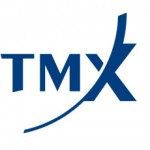No Company Too Small to Pursue Finance Operations Excellence

The biggest barriers to optimized performance tend to be self-imposed, such as permitting unnecessary complexity in finance processes and systems.
Size equals scale equals efficiency, right? Yes, but there are very few structural reasons why companies with less than $3 billion in revenue should be at any disadvantage when it comes to optimizing their performance in transactional finance for cost, quality and cycle time.
While costs for larger companies tend to be lower, top-quartile performers in every revenue category The Hackett Group has studied (under $3 billion, $3-10 billion and more than $10 billion) have similar cycle-time performance; plus, smaller companies actually have lower error rates. The largest companies may have more sway in getting suppliers to support them in their pursuit of best practices. However, the cost benefits from eliminating unnecessary complexity and attaining top-quartile performance put smaller companies on the same playing field as larger ones.
This same pattern exists in nearly every transactional area, including account-to-report, purchase-to-pay, customer-to-cash and, in companies where payroll reports to the CFO, payroll administration. This means that almost any company can benefit from global business services, enterprise process ownership, process standardization and automation.

A Surmountable Cost Gap
While company size inherently influences performance outcomes, it is not the sole factor. In fact, the biggest barriers to optimized performance tend to be self-imposed, such as failing to adopt best practices and permitting unnecessary complexity in finance processes and systems.
True, the larger the company (as measured by total revenue), the lower finance’s total cost as a percent of revenue tends to be. Median companies under $3 billion see finance costs as a percent of revenue that are more than 2.5x that of companies over $25 billion.
But Hackett research finds that the top quartile of any set of companies grouped by size usually has similar or lower costs than median companies of the next-largest size category (see figure above). For example, those with under $3 billion in revenue have a top-quartile finance cost that is 11 percent lower than the cost of finance at the median group of companies with $3-10 billion in revenue.
The key is to achieve the greatest scale possible for transactional processes. Rather than permit each business unit to handle its own finance processes, finance organizations need to simplify and standardize processes, then combine them for scale. For example, top-quartile performers rely on up to 20 percent fewer finance applications per billion of revenue than median companies and up to 50 percent fewer general ledger accounts.
Enabling Efficiency, Effectiveness and Quality
Costs do decline sharply when companies surpass $10 billion in revenue. One reason could be the amount of efficiencies available to companies of this size. For example, they can use a multifunction global business services (GBS) or even a function-specific shared services structure to centralize and reduce the cost of processes for a sizable portion of the company. For the largest of them, simply standardizing processes within a single business unit is enough to move the cost needle. Hence, companies of any size can seek opportunities to standardize processes. Standardization provides the basis for creating scale, and moving fragmented process execution to a common group locks in those gains.
Neither is small size a barrier to doing high-quality work. In fact, our research found that smaller companies have up to 40 percent lower customer billing error rates than larger companies and nearly 30 percent fewer accounts payable transactions requiring correction. There is no reason to think that size alone would raise the quality of these processes. Rather, the concentration of resources and lower level of complexity may enable this.
Hackett research does show much higher variances for smaller companies in some effectiveness measures. For example, there is a 16 percent difference in percentage of credit sales collected within terms between the median and top-quartile at companies that have less than $3 billion in revenue, while at companies over $10 billion, the difference is far smaller (See Figure 2). For this metric, the top quartile of smaller companies is better at collecting within terms than the median performers at the very largest companies. This may be because at smaller companies there are tighter connections between granting credit and information about the customer’s payment history.

The median number of credit full-time equivalents per billion in revenue is similar, probably meaning that at the smallest companies, the same individuals work on credit and related processes, whereas larger companies are likely to have dedicated credit staff. Larger companies deal with more complexity both in their internal structures and in the size of their customer and product base.
The point is that size does not have a great impact on most effectiveness areas. All companies need to do the same things to emphasize quality billing and payments, and to tightly link sales and credit.
Closing the books, on the other hand, takes a similar length of time regardless of company size. The middle group of companies, i.e., with $3-10 billion in revenue, has the longest cycle times. This pattern is consistent for month-end reporting. Again, complexity can exert its slowing influence on cycle time. Prior Hackett research found 33 percent longer cycle times at companies with the highest numbers of legal entities per billion in revenue.
This pattern is also true for basic transactions such as accounts payable. Smaller companies’ cycle times are similar to those of larger companies, and variances are much smaller. The median company in the under $3 billion category is faster than the median of either of the other two groups.
Without a doubt, it is possible to improve competitiveness on the cost and quality fronts regardless of company size. However, some best practices can be difficult for smaller companies to implement, such as use of electronic supplier invoices. Here, greater adoption is definitely correlated with size. Nearly half of all median companies over $10 billion deliver invoices to suppliers electronically, compared with less than a quarter of all companies in the $3-10 billion range and only 10 percent of all companies under $3 billion.
It may be assumed that a larger company has more clout in getting suppliers to conform to its standards, while a smaller company is at a disadvantage both in the price it pays for goods and services and in the terms it can impose on its relationship with suppliers.
Takeaways
Having less than $3 billion in revenue does not limit a company’s ability to reduce the cost of transactional finance processes. Even organizations that have spent years conducting process improvement initiatives are likely to continue finding plenty of new opportunities to implement best practices and eliminate complexity.
One fruitful approach is to minimize the number of finance applications in use and move routine, repeatable finance services to a GBS organization. These practices bring the advantages of scale (i.e., ability to amortize costs and provide standardized levels of high-quality support). Companies should beat the bushes for opportunities to handle multiple functions within a single application, with the goal of moving toward a single instance (which requires less in the way of knowledge and resources to support).
Smaller companies should also be more aggressive in pursuing the synergies available from designing and managing processes from end to end. This will reduce errors and rework, and ensure that people working on elements within the process all have the same goals and standards.
Regardless of company size, it is always best to avoid replicating the finance organization in each business unit. Transactional processes tend to be some of the most highly fragmented, and finance leaders should do whatever they can to ensure that services are placed where they make the greatest sense for the overall enterprise.
Authors: Srinivasa Rao Dabbera, Lynne Schneider and Tom Willman
Srinivasa Rao Dabbera has more 10 years of experience in business analytics applications and quantitative analysis. He manages The Hackett Group’s quantitative qnalysis team, located in Hyderabad, India. Lynne Schneider is responsible for leading the development of research and other intellectual property for The Hackett Group’s executive advisory programs in both human resources and finance. Tom Willman has nearly 20 years of experience helping CFOs and other senior finance executives transform their organizations by deploying more efficient and effective processes, service delivery models and enabling technologies.
Source: cfo





























